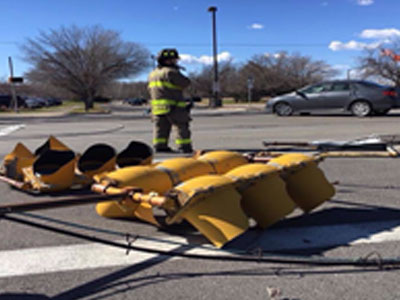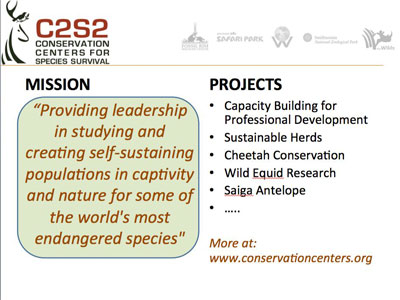 |
Understanding Adverse Childhood Experiences (ACEs) (CDA 3) |
2.00 |
Children who are exposed to adverse childhood experiences (ACEs) face an increased risk for social-emotional, physical, and mental health issues. ACEs include abuse, neglect, parental separation or divorce, and other traumatic experiences before the age of eighteen. This course explores the awareness of trauma in young children and families and discusses the role of the early care and education professional in nurturing resilience. This course will help you to better understand ACEs and trauma. |
 |
Understanding and Combating Educator Burnout |
1.00 |
This course is designed to provide you with the knowledge and strategies necessary for understanding and overcoming the complexities of burnout. It is just one out of many educational professional courses we offer. By exploring practical strategies, you will gain insights into building resilience and cultivating a sustainable, fulfilling career in education. As educators thrive in their careers, they, in turn, become better equipped to support students, creating a positive ripple effect within the educational community. |
 |
Understanding Autism in Your Community |
1.00 |
This course is designed to educate communities on how they can work together to be more inclusive and accepting of people with autism. It will give you an overview of the struggles people with autism face and some ways in which communities can make themselves more accessible and autism-friendly. |
 |
Understanding Cognitive Behavioral Therapy |
1.00 |
This course covers the fundamental principles of cognitive behavioral therapy. It explores how educators can apply them to assist students with cognitive distortions or specific disorders that may affect them. It is just one out of many educational professional courses we offer. This course will help you develop new knowledge about students and will give you specific resources to help you in the classroom.
Please note, educators are not trained psychologists. This course is meant to serve as an introduction to cognitive behavioral therapy concepts so they understand what resources are available to their students. For true cognitive behavioral therapy, students should consult a registered psychologist. |
 |
Understanding Learning Theories (CDA 8) |
2.00 |
This course dives into the fascinating world of learning theories, empowering you to select activities, courses, and materials that ignite young minds. Explore key concepts that guide your choices, ensuring an age-appropriate and individualized learning experience for every child. Watch their potential blossom as you translate theory into practice, fostering a classroom environment that fuels curiosity and cultivates lifelong learners. |
 |
Understanding Overhaul Operations |
0.50 |
This introductory level course introduces the concept of overhaul operations. The course will describe techniques used to identify, locate, expose, and extinguish hidden areas of fire while maintaining loss control and preserving evidence of fire origin. This course is evaluated with a final quiz. The clock time for this course is approximately one-half clock hours. |
 |
Understanding Poverty and Practical Strategies (CDA 3 & 4) |
2.00 |
This course empowers early care and education professionals to build strong relationships with families facing economic challenges. Delve into the realities of poverty and its impact on family dynamics. Discover practical communication strategies tailored to bridge understanding and effectively connect families with essential resources and support networks. Watch trust and collaboration flourish as you create a truly inclusive and supportive learning environment for every child. |
 |
Understanding the Basic Concepts of HIPAA |
0.75 |
This course will give participants a basic understanding of the Health Insurance Portability and Accountability Act (HIPAA). Participants will learn what HIPAA is, how it changes the way we do our work, federal vs. state standards, patient rights, the purposes of HIPAA compliance and more. |
 |
Understanding the Behavior of Children and Youth |
2.00 |
The development of children and youth can cause them to behave in ways that can be trying for even the most knowledgeable and experienced staff. When staff understands what is driving the behavior, they can help to guide and encourage acceptable behaviors. This course will provide participants with the knowledge and skills necessary to prevent unwanted behavior by meeting the needs of children and youth before they act out. |
 |
Understanding the CDA Credential and Process (CDA 6) |
2.00 |
This course introduces the CDA Credential™, a nationally recognized pathway for early childhood professionals to bolster their knowledge, hone their skills, and advance their careers. Explore the CDA process, its diverse pathways, and its potential alignment with your professional development goals. Discover how well-equipped caregivers, empowered by the CDA, contribute to nurturing environments that foster optimal learning and development for young children. |
 |
Understanding the Freedom of Information Act (FOIA) in Schools |
1.25 |
This course includes comprehensive information about the Freedom of Information Act (FOIA) and its implications in educational institutions. It includes FOIA basics, compliance requirements, best practices, and case studies relevant to schools. This is just one of the many K-12 Education courses we offer. |
 |
Understanding the Immigration Process |
1.00 |
This course is designed to provide information about the immigration experience and process children, youth, and their families have gone through to come to the United States. Strategies for supporting the emotional well-being and academic success of immigrant students will be provided. We hope this course will help you understand your immigrant English learners and their families a little better. |
 |
Universal Design: Providing Accessibility to All (Webinar) |
1.00 |
The intent of Universal Design is to provide what is considered “Life Span” or “Barrier Free” designs. That means that products and the built environment are designed in a way that everyone is able to use it, no matter a person’s age or ability. The design is not only intended for a person with a disability but also for a child or shorter adult to easily use and provided in an inclusive way. This session will review the history of Universal Design, what makes it different and more effective than present accessibility codes and examples of how these can be included into zoo, aquarium and museum designs. |
 |
Use Information Correctly |
0.75 |
This course covers the basics of using online information. We will go over copyrights, Creative Commons, and public domain work, as well as the rules associated with using these forms of media. |
 |
Utility Pole Incidents (NYS05) |
1.00 |
This is a basic lesson for the introduction or review of the utility pole for the firefighter. The lesson defines types of utility poles and identifies the risks and hazards associated with operating at incidents that involve them. The lesson is evaluated with a final multiple-choice quiz. A grade of 80% or better is required to pass this course. |
 |
Utilizing the Quick CASP Assessment Tool |
2.00 |
CalSAC partnered with the Summer Matters campaign to create our Quality Summer Program training series. Summer months bring unique opportunities for learning outside the traditional school year and walls. High quality summer learning programs change students’ lives for the better with an opportunity to improve their academic achievement and readiness to learn. Developing quality programs requires intentional, ongoing development. Engage in activities that will help identify and strengthen the quality of your summer learning program.
Utilizing the Quick CASP Assessment Tool is the second module in the Quality Summer Programming Training series. Creating a high quality summer learning program first starts with assessing the program at every level from the planning stages to the implementation of the program. In this module, participants will understand the language used in the Quick CASP Assessment Tool to describe quality summer programming and learn about the Quick CASP Assessment Tool to guide program quality improvement. |
 |
VAD Educational Updates for the Prehospital Care Provider |
1.00 |
Ventricular Assist Devices (VADs) are not new devices. In fact, the first successful use of such a device was described in 1966. Since then, and particularly in the past few years, VAD design and safety has improved significantly and are now commonly implanted devices.
This course strives to bring prehospital providers current with the most commonly implanted devices at the time - this course will not cover every device that a prehospital provider may encounter.
Following successful completion of the material, the provider should feel comfortable recognizing the VAD patient when encountered in the community, have an understanding of the basic VAD components, be able to assess the VAD patient's hemodynamic status, and be able to deliver care in the prehospital setting. |
 |
Vehicle Fire Operations (NYS05) |
1.00 |
This course is a general overview of safe firefighting operations at vehicle fires. The lesson discusses proper risk management of a vehicle fire through the identification of hazards and application of safe, effective, and efficient operations. Several types of vehicle fires are described and hazards associated with each are identified. The tactical needs and priorities of vehicle fire operation are reviewed. Finally, a safe procedure for performing suppression tasks at a vehicle fire is introduced. The course is evaluated with a multiple-choice quiz. The firefighter must achieve a score of 80% or better to pass the course. |
 |
Vertebrate Ethology Series: Team Building and Collaborative Research |
1.00 |
Do you want to collect behavioral data to aid in decision-making about animal husbandry, but are not sure where to start? Listen in as a research team invites graduate students to join in the collaborative effort. In this webinar, you will learn more about the inquiry cycle and how it will be simplified into 8 steps that the team will complete together over the next 2 months. This team is investigating a "bull switching" treatment for managing big herds of African antelope. However, the inquiry process would be applicable for any research topic. |
 |
Video Analysis: Activities and Events |
1.00 |
The video-data for your inquiry project has been collected, now what? Testing your hypothesis is usually a dance, back and forth between the "ideal" and "reality-check". Listen to a research team decide how they will analyze video-data to extract just the information needed to focus on the inquiry questions. The first step is to sort video clips by activity categories, then score each clip using a recording protocol defined in terms of counting behavioral events and/or time sampling of activity states. |
 |
Virtual Teams: Alternative Office Arrangements |
0.50 |
This course will focus on how to identify the types of alternative office arrangements and the benefits of telecommuting and the skills and challenges of telecommuters. |
 |
Virtual Teams: Communication |
1.50 |
This course will focus on how to identify the importance of effective communication, the purpose of a communication design process, the technological and cultural barriers in communication, and the technological innovations in communication and the guidelines for using these technologies. |
 |
Virtual Teams: Effectiveness, Social Dynamics, and Decision-Making |
0.75 |
This course will focus on how to identify the factors influencing effectiveness and the indications revealing ineffectiveness, identify the social dynamics stages and factors, and identify the steps in the decision-making process, methods of making decisions, and the challenges while making decisions. |
 |
Virtual Teams: Fundamentals of Virtual Teams |
0.50 |
This course will focuse on how to identify the purpose and types of virtual teams, identify the benefits of serving in virtual teams and types of work and meetings carried out by virtual teams, and identify the schedule of a session, and the agenda of a session. |
 |
Virtual Teams: Obstacles and Success Factors |
0.50 |
This course will focus on how to identify the obstacles in the progress of a virtual team and identify the factors that influence the success of a virtual team. |


























